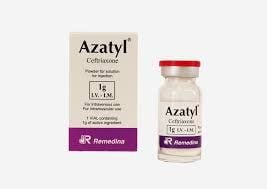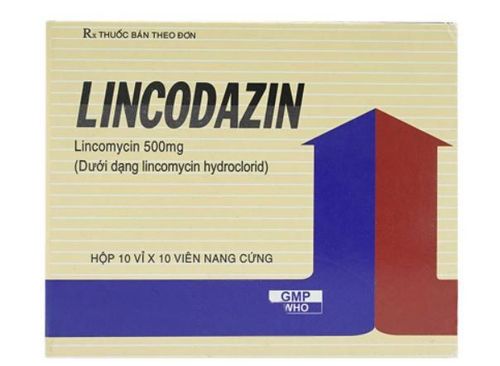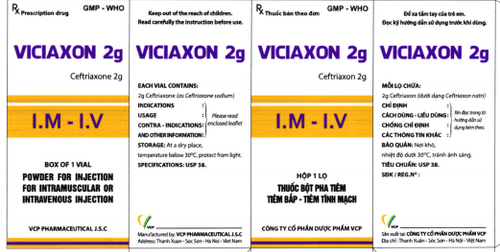This is an automatically translated article.
Cabemus drug is used by intramuscular or intravenous route to effectively treat respiratory, urinary, bone and gastrointestinal infections,... Before and during treatment with Cabemus Patients need to follow the doctor's instructions to get rid of the disease as soon as possible.
1. What is Cabemus?
Cabemus belongs to the group of effective antiparasitic, antiviral, antifungal and antibacterial drugs. Cabemus drug is used mainly in cases of infections of the respiratory tract, bones, joints, skin, soft tissues and gastrointestinal tract,...
Currently, Cabemus drug originated from Russia and is circulated. widely in Vietnam. Cabemus is prepared in the form of a powder for injection and packaged in a box of 1 vial. Each vial of Cabemus contains the main active ingredient, Ceftriaxone sodium, with a concentration of 1g and a number of other auxiliary excipients.
2. What are the uses of Cabemus?
2.1 Effect of the active ingredient Ceftriaxone Ceftriaxone in Cabemus belongs to the 3rd generation Cephalosporin group, has broad-spectrum activity and is usually administered as an injection. Ceftriaxone has the ability to inhibit the synthesis of bacterial cell walls, thereby providing an effective bactericidal effect.
Ceftriaxone works by binding to 1 or more penicillin-binding proteins. At that time, this active ingredient can inhibit the final step in bacterial cell wall biosynthesis. Similar to other 3rd generation cephalosporins (Ceftazidime, Cefotaxime,...), Ceftriaxone has less activity against staphylococci strains than 1st generation cephalosporins, but this active ingredient has a broader effect on strains of Gram-negative bacteria.
The following are the pharmacokinetics of Ceftriaxone in Cabemus:
Absorption: When administered parenterally, Ceftriaxone is poorly absorbed from the gastrointestinal tract. Distribution: Ceftriaxone is distributed into most tissues and body fluids, with good penetration into the cerebrospinal fluid, especially in cases of meningitis. In addition, Ceftriaxone also crosses the placental barrier and enters breast milk. Metabolism and Elimination: Ceftriaxone is metabolised mainly in the liver and eliminated by the kidneys. 2.2 Indications and contraindications to the use of Cabemus drug Cabemus is used as prescribed by a doctor for the following infections:
Respiratory tract infections. Ear-nose-throat infection. Kidney infection. Genitourinary tract infections. Septicemia . Meningitis. Prophylactic treatment of infections of bones, joints, postoperative infections, skin, wounds, soft tissues. Treatment of gastrointestinal infections, cholecystitis, cholangitis or peritonitis. However, it is necessary to avoid self-administration of Cabemus in the following cases of patients without a doctor's prescription:
Contraindicated in patients with hypersensitivity or history of anaphylaxis to Cephalosporins or Penicillins . Avoid administering Cabemus intramuscularly to people who are sensitive to lidocaine. Cabemus is contraindicated in neonates with symptoms of hyperbilirubinemia, especially premature infants. Do not give Cabemus to children who are taking calcium-containing products. Cabemus is contraindicated in pregnant women or nursing mothers.
3. Instructions for use and dosage of Cabemus
Cabemus is administered by intramuscular or intravenous injection. Cabemus will be administered by deep intramuscular or slow intravenous injection over 2-4 minutes. Below is the dosage of Cabemus to treat infections:
Dosage for adults and pediatric patients over 12 years of age: Inject dose from 1-2g/day, for severe cases can use 4g/day . Dose for children from 15 days old to 12 years old: Inject dose from 20 to 80mg/kg body weight/day. Dose for children under 14 days old: Use dose from 20-50mg/kg body weight/day. Dose to treat meningitis: Use a dose of 100m/kg body weight/time/day, up to 4g. Treatment of gonorrhea: A single dose of 250 mg intramuscularly. Dose to prevent postoperative infection: Inject 30-90 minutes before surgery dose from 1 to 2g. During treatment with Cabemus, patients need to strictly follow the doctor's instructions. Absolutely do not arbitrarily inject or adjust the dose of the drug other than prescribed.
4. What side effects does Cabemus cause to users?
In addition to the treatment and prevention of infection, Cabemus also has the risk of causing some adverse side effects for patients during use, including:
Common reactions: Rash , rash , skin reactions or diarrhea . Uncommon reactions: Edema, phlebitis, fever, thrombocytopenia, urticaria, leukopenia, eosinophilia, interstitial pneumonia. Rare reactions: acute renal failure, severe colitis, yeast overgrowth, hematuria, anemia, shock, dizziness, headache, agranulocytosis, pseudomembranous colitis, coagulopathy, hematuria, erythema multiforme, transient elevation of liver enzymes, elevation of serum creatinine or genital fungal infection. These side effects can be detrimental to the patient's treatment of bacterial infections, even leading to a number of other health consequences if not corrected early. Therefore, when any unusual symptoms occur while using Cabemus, the patient should notify the doctor as soon as possible to take measures.
5. Things to note and caution when using Cabemus
Before starting treatment with Cabemus, patients should note a few things:
Carefully check the patient's history of allergies to Penicillin, Cephalosporins and some other drugs. There is a risk of cross-allergic reactions when Cabemus is given to people who are allergic to penicillin. Cabemus should be used with caution in patients with impaired liver and kidney function. Avoid using more than 2g of Ceftriaxone/day for these patients. Do not treat with Cabemus for more than 14 days and when the body is dehydrated because the active substance Ceftriaxone is likely to precipitate in the gallbladder. Before starting treatment with Cabemus, the cause of anemia should be investigated because the drug has the potential to lead to serious and fatal hemolytic anemia. Administration of Cabemus to pediatric patients may cause symptoms of urolithiasis, postrenal acute renal failure, or ureteral obstruction. If convulsions occur, Cabemus should be discontinued immediately and anticonvulsant measures taken. If diarrhea occurs during or after treatment with Cabemus, the patient should discontinue the drug. Causes false-positive results when performing the Coombs test in patients treated with Cabemus. In the event of an overdose of Cabemus, measures can be taken to manage the symptoms. Check the expiration date of Cabemus to avoid injecting expired medicine. If Cabemus powder shows signs of discoloration or impurities, the patient should discontinue use and dispose of the drug according to instructions. Cabemus may interact with diuretics when taken together. Above is all information about Cabemus, patients need to carefully read the instructions for use, consult a doctor / pharmacist before using. Note, Cabemus is a prescription drug, patients absolutely must not buy and treat at home because they may experience unwanted side effects.













